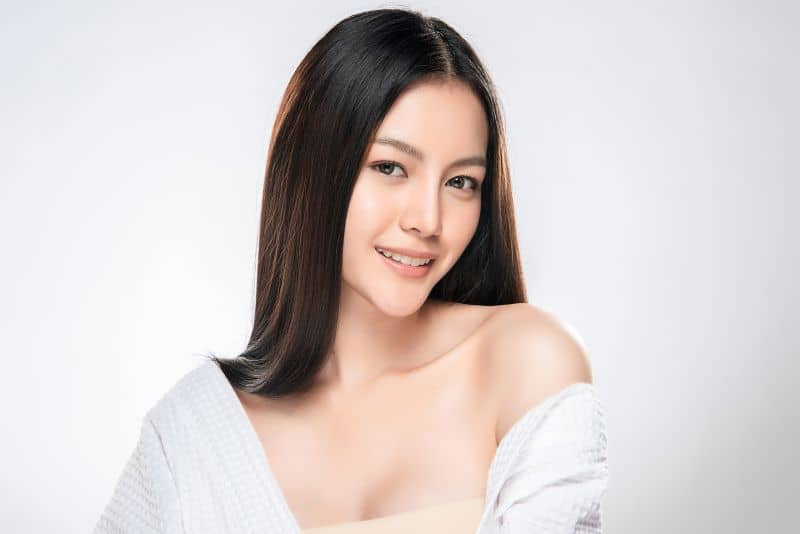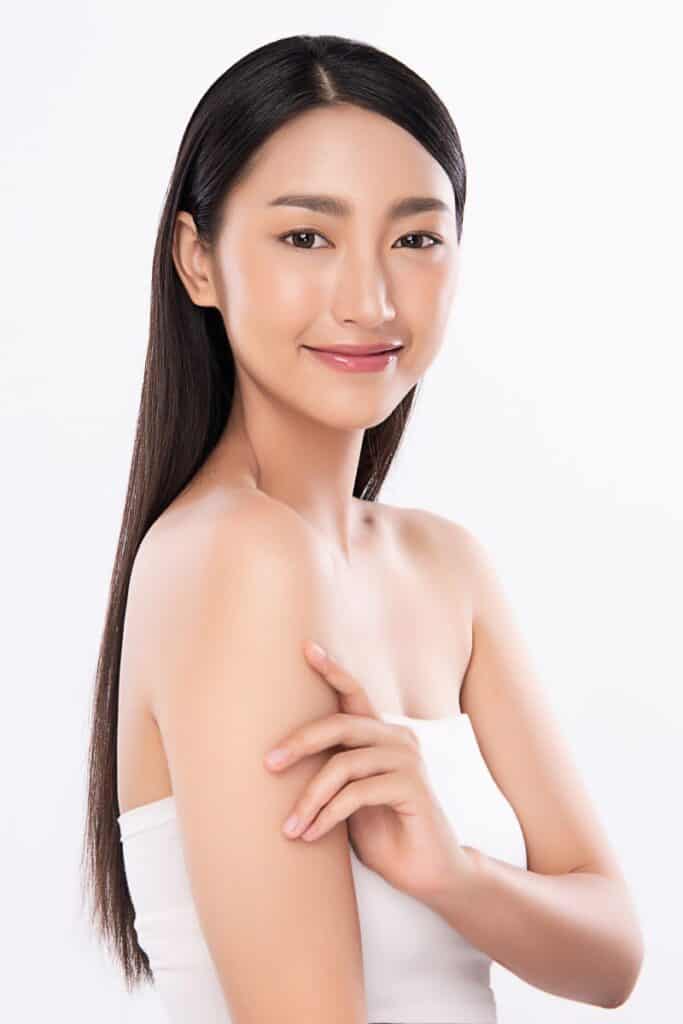Reviewed by Mary Anne Jennelle, a Hair Stylist & licensed cosmetologist.
Japanese hair straightening uses a combination of chemicals and heat in order to make hair completely straight. The hair stays straight permanently until it is grown out. This hair straightening procedure is also known as, thermal hair reconstruction, thermal reconditioning, Japanese straight perm, bio ionic hair retexturizing, or high-tech straight perm.
Japanese hair straightening makes hair pin straight by breaking down the internal bonds that give hair its shape. The procedure was developed in Japan in the late 1990s and later has grown in popularity all over the world.

Who is the Best Candidate?
If you have naturally curly and frizzy hair and spend a lot of time each day straightening it, thermal reconditioning can be a very worthwhile alternative.
Before opting for Japanese thermal hair straightening, consult an experienced stylist to make sure it will work for your hair type and condition. Japanese straightening works best on hair that has not been chemically treated before. For colored, permed, or bleached hair the outcome depends on what kind of chemicals were used and how many treatments your hair’s been through.
Natural hair is not suitable for this straightening method, as it cannot withstand heat and strong chemicals. Another obstruction for extremely curly hair is the awkward regrow factor. It may not look good when the new, curly hair grows from the roots. Touch-ups need to be done in two months or so, to soften new growth.
The procedure cannot be done on the previously relaxed hair until it grows out.
Related post:
The Procedure
The thermal reconditioning method is time-consuming and requires skilled hands and a lot of work. The procedure can take two to eight hours, depending on the hair length, thickness, and condition of your hair.
- The consultation is the first and very important step. An experienced stylist will perform a strand test, applying a small amount of solution to determine how your hair will react to chemicals and to decide what type of formula to use.
- In the next step, the hair is washed with a sodium-free clarifying shampoo to remove the product build-up and create a clean foundation for applying the straightening solution.
- The hair is then separated into small 1/8-inch sections, and a special blend of chemicals is applied to each section avoiding the scalp. This relaxing solution, known as the re-texturizer, should be left on the hair for 10-40 minutes under a dryer, depending on your hair type.
- When the processing is done, the re-texturizer is completely rinsed out with warm water, and the hair is blow-dried.
- When the hair is dry, the technician runs a very hot ceramic flat iron over the treated hair, piece by piece. This step could take a lot of time.
- When your hair is completely straight, a neutralizer is applied to close the cuticle and lock the style into a new, straight shape.
- The hair is shampooed and blow-dried again. Lastly, the hair is flat ironed one last time to ensure sleek results.
Some people may need an additional session three days after the initial treatment, which will take another hour.

What Results Should You Expect
- Thermal reconditioning produces perfectly straight, shiny, and frizz-free hair.
- Drying and styling your hair requires much less time and effort. You can wash your hair and go without having to blow dry or straighten it. The hair is also easy to detangle.
- Japanese Thermal Reconditioning System may improve the natural texture of hair that has been exposed to heat tools over a long period of time.
- The treatment also helps reduce the volume of very thick and dense hair.
- You can expect to have straight and frizz-free hair with a silky feel for about 6 months. So, you can put away your flat iron, forget time-consuming blow-dries and enjoy your new and active-lifestyle-friendly hair.
- Straightened hair will stay straight until new hair roots grow back or you cut it off.
- The new hair that grows at the roots will have its natural texture, so you’ll need to go to your salon for additional touch-ups. Retouching is needed approximately twice a year, depending on the hair type and how fast your hair grows. Your stylist will only do touch-ups on newly grown hair and will avoid applying the solution on previously treated hair.
The Downsides of Japanese Hair Straightening
Before opting for the thermal reconditioning treatment, there are a few things you need to keep in mind:
- Any chemical treatment in combination with extremely high temperatures has the potential to damage your hair. When the procedure is not performed correctly, it can cause unwanted adverse effects, like severe breakage and hair loss. If you decide to receive the treatment, be sure to consult a trained and experienced stylist that will check the condition of your hair first.
- The procedure is quite expensive and time-consuming. It costs anywhere from $300 to $1000 and takes up to seven hours.
- The treatment makes your hair board straight, so you won’t be able to try new looks as styling options will be limited. It is impossible to wear your hair curly because it won’t hold a curl after thermal reconditioning.

